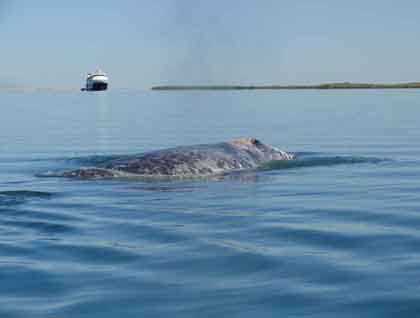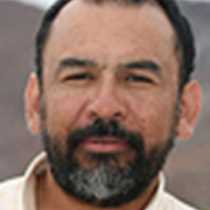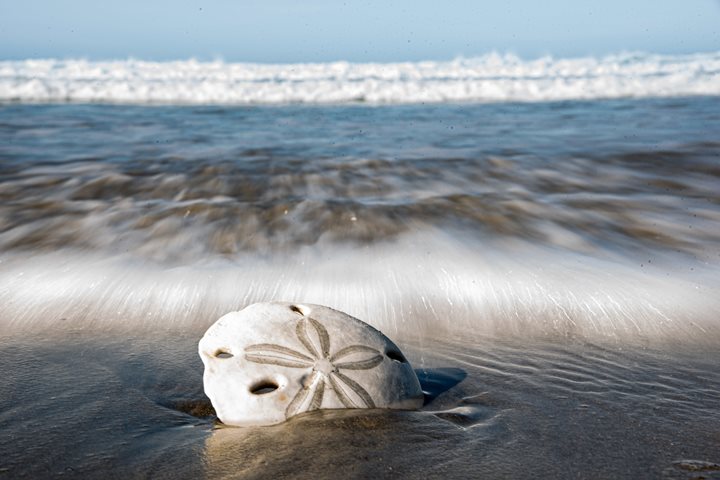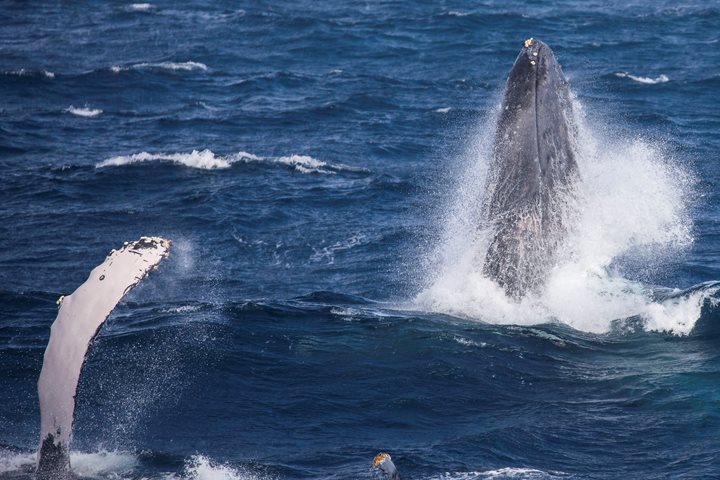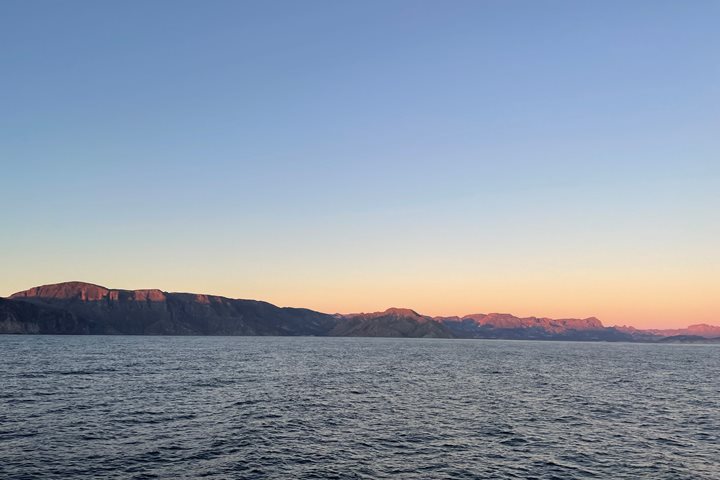This day begun with a spectacular sunrise that painted the dark sky in red, orange, and blue tints. The ship was anchored just north of La Florida, locality for our morning activities in Magdalena Bay. After breakfast, we boarded our expedition landing craft for another wonderful time with the gray whales.
The seawater of this coastal lagoon was, to our delight, flat as a mirror, with almost no breeze blowing on it, and the atmosphere was hot and free of clouds, crowned by a bright sun above us. We looked for the whales, and discovered at least 16 pairs of cows and calves swimming gently and slowly, looking just as gray knives skimming the surface of blue-green butter. The giants, and us, showed no hurry for anything in those moments of magic quietness. The dunes on Magdalena Island looked like petrified beings of yellow, brown, and ochre coloration. We spend another wonderful morning in the company of the whales, learning more about their lives and their migration to the quiet waters of the three Mexican coastal lagoons and bays where their calves are born. The protection that the Mexican nation has provided to them, since December, 1971 (for 45 years!) has been the trigger for their population increase.
Leaving the whales later, the ship navigated southbound while guests and staff enjoyed hamburgers and hotdogs in the sundeck, contemplating the biological “jewels” that live in the canal: more whales, dolphins, many shore and marine birds, an immature bald eagle, and more coyotes, among other beings. In the afternoon, we anchored and walked on a narrow section of the island to reach the Pacific side, called “sand dollar beach”—so named for the huge amounts of these animals on the sand. The dunes with halophytic vegetation, the mountains and the ocean formed a natural, beautiful “cocktail” that said goodbye to us.

